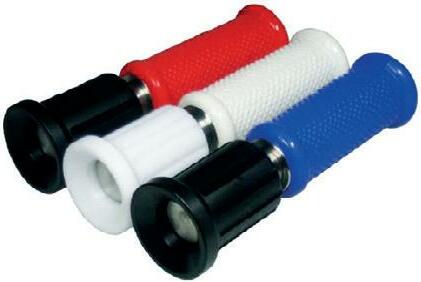
8 minute read
Edible tag in a biscuit
Tags containing data are commonly used in the food industry. They range from the very basic, like stickers on fruit, to the more technologically advanced, such as radio frequency identification tags that use electromagnetic fields for the automatic identification and tracking of products. However, as the world attempts to cut back on extra packaging, the race is on to develop edible food tags that are non-toxic, don’t change the food’s flavour or appearance, and can be read without having to destroy the food itself.
Researchers from Osaka University have addressed all these issues by developing a method of using a 3D food printer to embed edible data inside food products.
In their original experiments, the researchers embedded edible tags inside biscuits. The tag, known as ‘interiqr’, can be read without having to first destroy the food and it doesn’t change the outer appearance or taste of the food.
“Many foods can now be produced using 3D printers,” explained Yamato Miyatake, lead author of the study. “We realised that the insides of edible objects such as cookies could be printed to contain patterns of empty spaces so that, when you shine a light from behind the cookie, a QR code becomes visible and can be read using a cellphone.”
In this way, a QR code that is made of biscuit is used as the tag, thereby solving any issues of taste and flavour. Even better, because all of the information is contained inside the food, the outer appearance of the cookie is completely unchanged. And because a simple backlight can be used to make the QR code visible, the information is readily available to producers, retailers and consumers at any stage of the food’s journey from factory to stomach.
“Our 3D printing method is a great example of the digital transformation of foods, which we hope will improve food traceability and safety,” said senior author of the study Kosuke Sato.
The researchers’ article, interiqr: Unobtrusive Edible Tags using Food 3D Printing, will be presented at The 35th Annual ACM Symposium on User Interface Software and Technology.



Stainless steel panel PC
Interworld Electronics has introduced the PhanTAM series of rugged, waterproof stainless steel Panel PCs from APLEX Technology. The series improves on previous stainless steel solutions, with an updated Intel 11th Gen. Core i3(Dual Core)/i5(Quad Core) BGA type processor, updated slim front frame design, special hygienic bolts on rear case, the ability to be used in landscape or portrait mode, and a waterproof antenna cover, which removes the risk of bending/breaking antennas.
Just like the ViTAM series, the PhanTAM series is designed for a wide variety of hygienic industrial applications, including food and beverage manufacturing, pharmaceutical industry and cleanrooms. The series has IP66- and IP69K-certified protection with M12 connectors.
The 304 (or optional 316) fully enclosed stainless steel chassis makes it suitable for the food and beverage manufacturing industry due to its slim design, high corrosion resistance and germ resistance, helping to prevent any bacterial contamination. The addition of new hygienic bolts with blue silicone rubber o-rings further helps to prevent water, dust and even bacteria accumulation, while still allowing for adaptability with mounting options.
The addition of waterproof antenna covers allows companies to make use of a range of antenna options (4G LTE, 5G, BT and Wi-Fi), while not having to worry about bending/breaking antennas. This further improves storage options and makes cleaning easier as well.
Features include: DC 9~36 V wide range power input; 15.6″ and 21.5″ screen sizes available; 11th Gen. Intel Core i3(Dual Core)/i5(Quad Core) Processor; supports up to 64 GB DDR4 RAM; wide temperature range: 0~50°C or -20~60°C (optional upgrade).
Interworld Electronics and Computer Industries
www.ieci.com.au
Cabinet coolers
When hot weather causes the electronics inside a control cabinet to fail, the operator might choose to simply open the panel door and aim a fan at the circuit boards. The fan ends up blowing a lot of hot, humid, dirty air at the electronics and the cooling effect is minimal. If the machinery starts functioning again, the likelihood of repeated failure is great since the environment is still hot and threatens permanent damage to the circuit boards. Worse yet, that open panel door is a safety violation that presents a shock hazard to personnel.
EXAIR has a complete line of Cabinet Coolers that are suitable for PLCs, line control cabinets, CCTV cameras, modular controls, etc. They mount in minutes through an ordinary electrical knockout and have no moving parts to wear out, eliminating maintenance concerns and making them virtually impervious to hostile environments. Wastewater treatment, chemical processing, food processing, paper manufacturing, steel mills and power generation are just a few of the facilities that are suitable for the technology.
NEMA 12 (IP54) Cabinet Coolers are dust-tight and oil-tight. They are suited to general industrial environments where no liquids or corrosives are present.
NEMA 4 (IP66) Cabinet Coolers are dust-tight, oil-tight, splash-resistant and indoor/outdoor capable. They incorporate a low-pressure valve for the air exhaust, which closes and seals when not operating to maintain enclosure integrity.
NEMA 4X (IP66) Cabinet Coolers offer the same protection as NEMA 4 systems. They are available in 303SS and 316SS for food and chemical processing, pharmaceutical, foundries, heat treating and other corrosive environments.
High Temperature Cabinet Coolers for NEMA 12, 4 and 4X applications are suitable for ambient temperatures up to 93°C. They are suitable for mounting near ovens, furnaces and other hot locations.
Thermostat control to minimise compressed air use is available for all models. All EXAIR Cabinet Coolers are UL Listed and CE Compliant.
Compressed Air Australia Pty Ltd
www.caasafety.com.au


Drives for warehouse logistics
The decentralised NORDAC ON frequency inverter has been developed for horizontal conveyor technology requirements in warehousing, and its NORDAC ON+ variant can be used with IE5+ synchronous motors. It has an integrated Ethernet interface and maintenance is made simple through its compactness and its plugand-play features.
The product can be mounted directly on the geared motor. It covers lower power ranges of up to 2.2 kW and has an energy-saving function in the partial load range. The integrated Ethernet interface can integrate into automation systems using Profinet, EtherNet/IP or EtherCAT, with protocols set via parameters.
Additionally, the NORDAC FLEX SK 205E series is suitable for warehouse logistics. The compact and decentralised frequency inverter offers a wide power range of up to 22 kW.
The inverter can be used to control standard asynchronous motors, high-efficiency synchronous motors and brake motors. It can be installed close to the drive in the field or motor-mounted. Power and data cable connections are available as plugin versions. The decentralised system enables short motor and encoder cables as well as short supply cables to sensors.
Encoder feedback can be included for position-controlled transport systems. The overload capacity of this product makes dynamic movements with short start and stop times or cyclic operation possible. The integrated POSICON control enables precision in synchronous and positioning applications.
NORD Drivesystems (Aust) Pty Ltd
www.nord.com




Design hub
Rockwell Automation is launching its FactoryTalk Design Hub to provide automation design capabilities with a more simplified way to work powered by the cloud. Suitable for teams of all sizes, skillsets and locations, it can work smarter through enhanced collaboration, improved lifecycle management and on-demand access to cloudbased software. The result is increased design productivity, faster time to market and systems that cost less to build and maintain. The hub is designed to improve development and deployment of automation projects for industrial organisations, while adhering to the latest security standards and information technology (IT) best practices. It enables teams to access designs on demand from any web browser with software that is up to date and flexibly scales users and compute capacity to meet project workload demands.
Five core solutions are available: FactoryTalk Design Studio, a cloud-native software product built from the ground up to improve system design efficiency; FactoryTalk Optix, a new addition to the Rockwell Automation visualisation range and the first cloud-enabled HMI product to be launched within FactoryTalk Design Hub; FactoryTalk Twin Studio, an end-to-end automation design solution where users can design, program, simulate, emulate and virtually commission in one cloud environment; FactoryTalk Vault, which provides secure, cloud-native centralised storage for manufacturing design teams, with version and access control; and FactoryTalk Remote Access, which enables secure connections to equipment, allowing teams to respond to needs faster and rapidly resolve production issues from anywhere.
FactoryTalk Design Hub and its core components will all be generally available by the beginning of 2023.
Rockwell Automation Australia
www.rockwellautomation.com/en-au.html



Machine vision camera
The pco.pixelfly 1.3 SWIR from PCO.Tech is a machine vision camera with an InGaAs image sensor that is IMX990-sensitive in the shortwave infrared, near infrared and visible range of the electromagnetic spectrum.
The camera is suitable for use in a variety of applications, including waste sorting, smart farming and food processing quality control, pharmaceutical and other product packaging industries.
The camera shows a good high sensitivity in the whole spectral range, with up to 90% in the shortwave infrared part. The small pixels enable the use of small magnification optics in microscopy and a low dark current for even longer exposure times. As a result, it shows high sensitivity across the entire spectral range with more than 90% in shortwave infrared.
Features include VIS & SWIR sensitivity, 400 to 1700 nm, 1280 x 1024 resolution, long exposure times due to low dark current and peak QE of 90%. The camera’s small 5 x 5 µm pixels enable the use of small magnification optics in microscopy. It measures 7 x 7 x 11.5 cm and uses a USB 3.1 Gen 1 interface.
SciTech Pty Ltd
www.scitech.com.au










